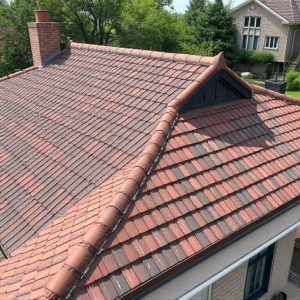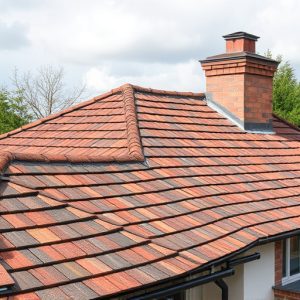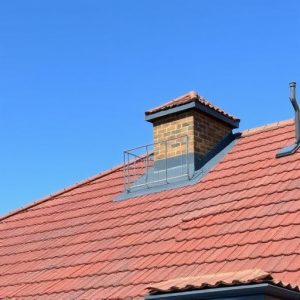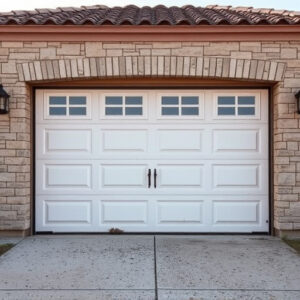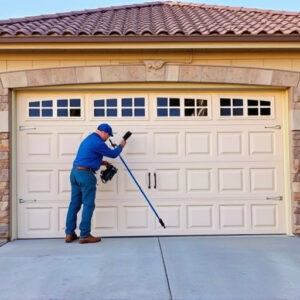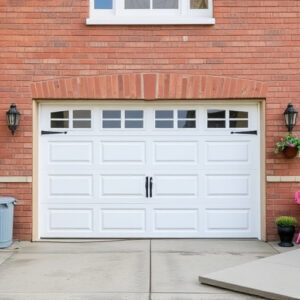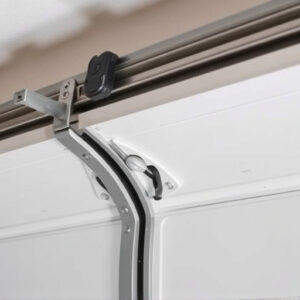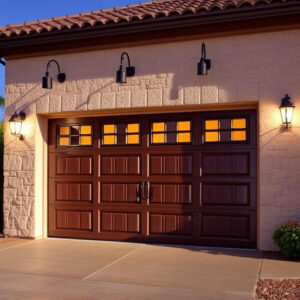Optimizing Your Flat Roof: Best Materials for Longevity, Sustainability, and Budget
Roofing materials are selected based on durability, cost, environmental impact, and performance char…….
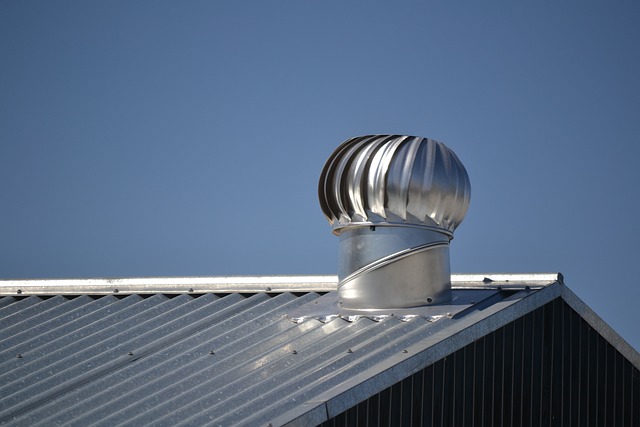
Roofing materials are selected based on durability, cost, environmental impact, and performance characteristics for both residential and commercial applications. Asphalt and modified bitumen are common choices for homes due to their balance of affordability and effectiveness against water intrusion. In commercial settings, PVC is lauded for its resistance to chemicals, fire, wind uplift, and punctures, while TPO is valued for energy efficiency and resilience in extreme temperatures. EPDM offers a cost-effective solution with long-lasting durability and is fully recyclable, minimizing waste. Sustainable roofing options like living roofs support biodiversity, absorb rainwater, and prolong the life of roof membranes, while also reducing urban heat island effects. EPDM's resilience against temperature extremes, ozone, and chemicals, along with its recyclability, makes it an eco-friendly alternative. In terms of budget and performance, traditional options like built-up roofing (BUR) provide cost-effective durability, while high-performance materials like PVC and TPO are energy-efficient long-term investments due to their reflective properties that reduce cooling costs and regulate thermal performance. Maintenance plays a crucial role in the lifespan of any roof, with PVC's repair simplicity and EPDM's weather resistance standing out. Building owners must weigh initial costs, long-term benefits, and maintenance demands to choose the optimal flat roofing system for their needs.
When considering a flat roofing solution, the choice of material is pivotal, influencing both the longevity and environmental footprint of your structure. This article dissects the most robust and eco-conscious flat roofing options available today. We’ll examine their durability, cost implications, and maintenance requirements to guide you in selecting a material that aligns with your needs and sustainability goals. From longevity leaders to budget-friendly picks, and their impact on thermal efficiency and waterproofing capabilities, readers will glean valuable insights for informed decision-making in roofing.
- Evaluating Durability and Longevity: The Top Flat Roofing Materials for Residential and Commercial Properties
- Eco-Friendly Options: Sustainable Flat Roofing Solutions and Their Impact on the Environment
- Budget Considerations: Cost-Effective and High-Performance Materials for Flat Roofs
- Performance and Maintenance: Comparing Thermal Insulation, Waterproofing, and Long-Term Care for Different Flat Roofing Materials
Evaluating Durability and Longevity: The Top Flat Roofing Materials for Residential and Commercial Properties

When assessing durability and longevity for flat roofing materials, it’s crucial to consider the unique demands of both residential and commercial properties. For homeowners, the priority often lies in finding a material that offers a balance between cost-effectiveness and lasting performance. Among the top contenders for residential flat roofs are asphalt and modified bitumen. Asphalt roofing is known for its affordability and ease of installation, while providing reliable protection against water intrusion. Modified bitumen, on the other hand, offers enhanced durability with added polymer modifications that resist weather extremes and aging.
In the commercial sector, the stakes are typically higher due to larger surface areas and varying building designs. Here, materials like PVC (polyvinyl chloride), TPO (thermoplastic olefin), and EPDM (ethylene propylene diene monomer) are often favored for their superior longevity and resilience. PVC is particularly noted for its exceptional resistance to chemical exposure, fire, wind uplift, and punctures. TPO is praised for its energy efficiency and flexibility in extreme temperatures. EPDM has been a long-standing favorite due to its cost-effectiveness and durability, with many systems lasting 20 years or more when properly maintained. Each of these materials contributes to the protection of structures against the elements, ensuring the safety and integrity of the buildings they cover.
Eco-Friendly Options: Sustainable Flat Roofing Solutions and Their Impact on the Environment

When considering sustainable flat roofing solutions, it’s crucial to evaluate materials that offer environmental benefits alongside functionality and durability. Among the eco-friendly options available for flat roofing, green or living roofs are particularly noteworthy. These roofs are covered with a layer of soil and planted with vegetation, which can range from sedum (a type of succulent) to full-fledged trees, depending on the structure’s load capacity and the desired insulation properties. Not only do living roofs provide a habitat for wildlife, but they also absorb rainwater, reduce urban heat island effects, and extend the lifespan of the roof membrane by protecting it from weather extremes.
Another sustainable material gaining traction in flat roofing applications is recycled rubber or EPDM (Ethylene Propylene Diene Monomer). This synthetic rubber is known for its longevity and resistance to extreme temperatures, ozone, and chemicals. Its long lifespan and the fact that it’s often made from recycled materials make it an environmentally sound choice. Additionally, EPDM can be fully recycled at the end of its useful life, minimizing waste and environmental impact. These sustainable options not only contribute to lower carbon footprints but also offer a practical and long-term solution for flat roofing needs.
Budget Considerations: Cost-Effective and High-Performance Materials for Flat Roofs

When selecting materials for a flat roof, both budget and performance are critical factors to consider. Cost-effective options like built-up roofing (BUR) and modified bitumen are popular choices among property owners with budget constraints. BUR systems, composed of layers of felt paper, hot asphalt, and aggregate surfacing, offer a durable solution at a lower cost compared to more advanced systems. Modified bitumen, on the other hand, combines asphalt with synthetic polymers, making it resistant to weather changes and providing longer lifespan benefits that can be cost-effective in the long run.
For those with a slightly higher budget, high-performance materials like PVC (polyvinyl chloride) and TPO (thermoplastic olefin) are worth considering. These single-ply roofing membranes provide superior durability and energy efficiency. PVC, in particular, is known for its longevity, resistance to chemicals, fire, and punctures, making it a robust choice. TPO, while also offering excellent UV reflectivity, flexibility, and thermal shock durability, can be more affordable than PVC while still delivering high-quality performance. Both materials contribute to reducing energy costs through their reflective properties, which is an advantageous long-term investment for any flat roof project.
Performance and Maintenance: Comparing Thermal Insulation, Waterproofing, and Long-Term Care for Different Flat Roofing Materials

When evaluating the best flat roofing materials, performance and maintenance are critical factors that influence longevity and overall effectiveness. Thermal insulation plays a pivotal role in energy efficiency, particularly for flat roofing systems where heat retention can be problematic. Materials like single-ply membranes such as PVC (polyvinyl chloride) or TPO (thermoplastic olefin) offer high reflectivity and are effective in managing thermal performance. These materials help to ensure that the building’s interior remains at a comfortable temperature, reducing energy costs.
Waterproofing capabilities are equally important as flat roofs are susceptible to water pooling. EPDM (ethylene propylene diene monomer) rubber is renowned for its durability and resistance to extreme weather conditions, making it an excellent choice for preventing leaks. Modified bitumen, another option, offers a multi-layered approach with reinforced protection against moisture intrusion. Both EPDM and modified bitumen require regular maintenance, including inspections and timely repairs to ensure long-term performance. Additionally, the choice of roofing material can impact the ease of maintenance; for instance, a membrane like PVC is both heat-welded and highly resistant to punctures, which simplifies repair processes. In contrast, green roofs, which involve planting vegetation over the waterproofing layer, can provide natural insulation and absorb rainwater, but they demand more rigorous maintenance to sustain the ecosystem while preventing soil erosion and drainage issues. It’s important for building owners to weigh the initial installation costs against the long-term benefits and maintenance requirements of each material when selecting the most suitable flat roofing solution for their needs.
When considering flat roofing options for your property, it’s crucial to weigh durability, environmental impact, and budget. This article has explored a variety of materials that stand out for their longevity and suitability for both residential and commercial settings. Among the eco-conscious choices, certain materials offer a sustainable alternative without compromising on performance. Budget-wise, there are options that provide cost-effectiveness alongside high-performance attributes. In terms of maintenance, understanding the thermal insulation and waterproofing capabilities of each material is key to making an informed decision. Ultimately, the best flat roofing material for your needs will balance these factors effectively, ensuring both long-term value and environmental responsibility.
